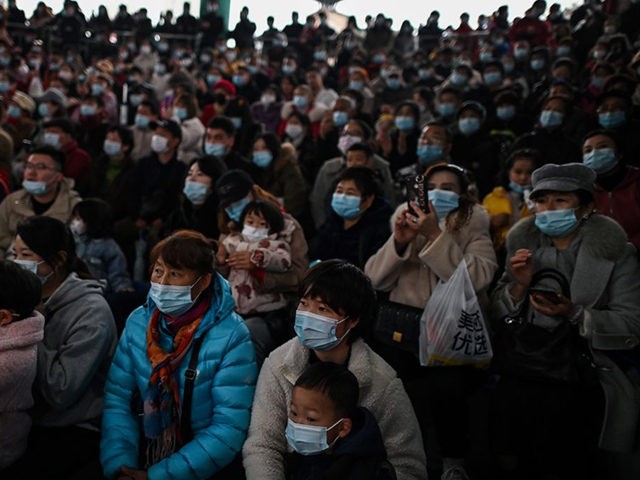China’s state-run Global Times on Tuesday reported the country registered 10 million newborns in 2020, a 15-percent decline from 2019 that brought China’s birth rate well below the “warning level” demographics experts have established.
According to the Global Times, there was some dispute between the Ministry of Public Security and the National Bureau of Statistics about precisely how many children were born in China last year, but no matter which agency gets the last word, the demographic news is not good:
There has been a declining curve of yearly new births in China — 17.86 million, 17.23 million, 15.23 million and 14.65 million in 2016, 2017, 2018 and 2019 respectively, according to data released by the NBS.
“The low birth rate in China has reached an alarming degree, but it is not a surprise,” Mu Guangzong, a professor from the Institute of Population Research at Peking University, told the Global Times on Tuesday.
The main reason for the decline is the low desire among young couples to have children due to the high cost of supporting a child, he said, noting that for many young couples, the general housing and education policies in China as well as the social environment as a whole do not encourage them to have kids.
The Global Times obliquely referred to the “unbalanced sex ratio of Chinese people” as another factor in declining birth rates. In other words, back when the authoritarian Chinese government was strictly enforcing its “one-child policy” with mandatory contraception and abortion, girls were considered a disposable luxury by parents desperate to have a son.
A generation later, China finds itself with a shortage of mothers, and male children still account for 52.7 percent of births. As of 2019, the Chinese population included 30.49 million more males than females.
“Nothing like this has happened in human history,” the Washington Post said of China’s sex imbalance in 2018, noting that Beijing must manage a generation of men “who will never find wives and only rarely have sex” that is roughly comparable to the population of California.
“Beyond an epidemic of loneliness, the imbalance distorts labor markets, drives up savings rates in China and drives down consumption, artificially inflates certain property values, and parallels increases in violent crime, trafficking or prostitution in a growing number of locations,” the Washington Post warned, noting that India has an equally troubling sex imbalance and many other Asian nations are not far behind.
The Global Times quoted Minister of Civil Affairs Li Jiheng’s warning in December that China has reached a “critical turning point” and sorely needs a “national strategy to tackle the aging population.”
Li said the fertility rate has plunged “dangerously” beneath the rate of 2.1 births per woman required to maintain a stable population, urging government action to boost the fertility rate to meet China’s growing need for workers. Other Chinese analysts estimated it could take 15 years or more for relaxed family planning rules to noticeably increase the birth rate, while China’s population of retirees swells inexorably to 300 million over the next few years.
AFP postulated Tuesday that China’s reversal of its notorious “one-child policy” in 2016 has yet to produce a “baby boom” due to “empowered Chinese women often delaying or avoiding childbirth and young couples blaming rising costs and insufficient policy support for families.”
The BBC noted China’s birth rate hit a 70-year low in 2019, three years after the end of the one-child policy. This is commonly attributed to a lack of government financial support for young couples to have the families their government suddenly desires, after years of threatening to destroy their lives if they dared to have a second child, but as the Global Times story suggested, there is growing concern that the male-female imbalance may have created a demographic log jam that cannot be cleared with government subsidies.
AFP’s report suggests China faces a unique combination of its own self-imposed demographic issues and the problem faced by almost every industrialized society: convincing young people to have children, especially multiple children, instead of pursuing their careers and enjoying material success is very difficult.
Not even two children are sufficient to rise above the 2.1 births per woman threshold of stable population growth; many families with three or more children are needed, and this is difficult to achieve if young people delay marriage and family in favor of professional and financial success. Reversing a plunge as steep as China’s, with such a huge excess of males in the population, probably cannot be achieved by simply offering larger subsidies to defray the cost of raising children.

COMMENTS
Please let us know if you're having issues with commenting.